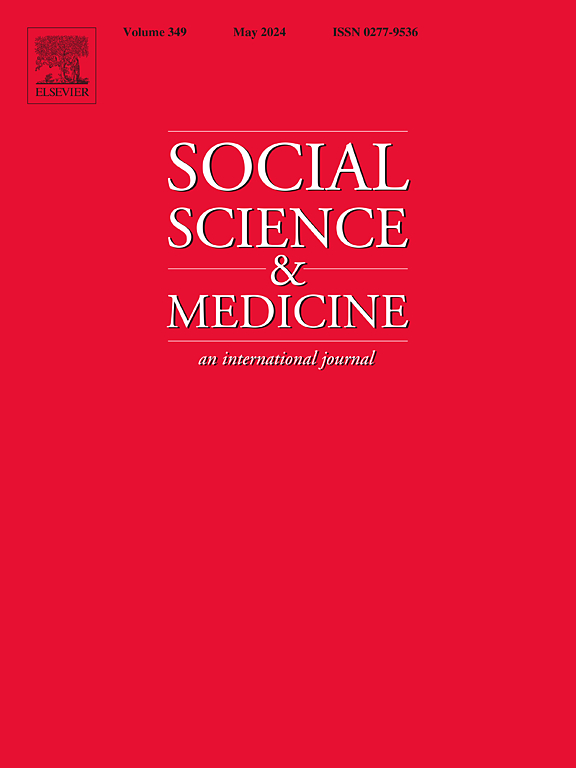邻里富裕与认知能力下降:种族适度?
IF 5
2区 医学
Q1 PUBLIC, ENVIRONMENTAL & OCCUPATIONAL HEALTH
引用次数: 0
摘要
先前的研究表明,社区富裕与晚年更好的认知功能有关,但我们相对不清楚这种好处是否同样适用于白人和黑人成年人。在目前的研究中,我使用三级增长曲线模型和来自健康与退休研究的数据,并将其地理编码为来自国家社区数据档案(N = 13,384)的数据,以检验十年来社区富裕、种族和认知功能变化之间的关系。结果表明,社区富裕与较高的认知功能基线水平相关,这种关系在黑人成年人中更为明显。在研究期间,认知功能随着受访者年龄的增长而下降,但社区富裕程度及其与种族的相互作用与认知功能的变化无关。这些发现表明,社区富裕是与认知功能的种族差异相关的显著环境资源。本文章由计算机程序翻译,如有差异,请以英文原文为准。
Neighborhood affluence and cognitive decline: Moderation by race?
Prior research indicates that neighborhood affluence is associated with better cognitive function in later life, yet we are relatively unaware if this benefit extends equally to White and Black adults. In the current study, I use three-level growth curve models and data from the Health and Retirement Study geocoded to data from the National Neighborhood Data Archive (N = 13,384) to examine the relationship between neighborhood affluence, race, and changes in cognitive function over a decade. Results indicate that neighborhood affluence was associated with higher baseline levels of cognitive function, and this relationship was more pronounced for Black adults. Cognitive function declined as respondents aged over the study period, yet neighborhood affluence, as well as its interaction with race, was not related to change in cognitive function. These findings suggest that neighborhood affluence is a salient contextual resource linked to racial disparities in cognitive function.
求助全文
通过发布文献求助,成功后即可免费获取论文全文。
去求助
来源期刊

Social Science & Medicine
PUBLIC, ENVIRONMENTAL & OCCUPATIONAL HEALTH-
CiteScore
9.10
自引率
5.60%
发文量
762
审稿时长
38 days
期刊介绍:
Social Science & Medicine provides an international and interdisciplinary forum for the dissemination of social science research on health. We publish original research articles (both empirical and theoretical), reviews, position papers and commentaries on health issues, to inform current research, policy and practice in all areas of common interest to social scientists, health practitioners, and policy makers. The journal publishes material relevant to any aspect of health from a wide range of social science disciplines (anthropology, economics, epidemiology, geography, policy, psychology, and sociology), and material relevant to the social sciences from any of the professions concerned with physical and mental health, health care, clinical practice, and health policy and organization. We encourage material which is of general interest to an international readership.
 求助内容:
求助内容: 应助结果提醒方式:
应助结果提醒方式:


